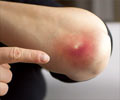Bacteria which are resistant to antibiotics lie resting in a dormant state, but have the ability to wake up and re-infect.

‘Sleeper cells remain non-growing for prolonged periods of time and elude detection using traditional methods.’





In the study, led by Stefano Pagliara, a biophysicist at the University of Exeter, the team used a miniaturized device which enabled them to isolate and study single bacteria over time. Next, the team dosed bacteria with ampicillin. They found that the vast majority of the 1.3 percent of cells that survived were live but non-growing.
These are "sleeper cells" because they look dormant and resemble the cells killed by antibiotics, but are potentially dangerous with the ability to "wake up" and re-infect humans or animals, Pagliara said.
Besides, these "sleeper cells", the researchers also found "persister cells", which accounted for less than one-third of surviving cells and started regrowing after the course of antibiotics ended.
Both groups shared similar features suggesting that the two populations of cells are linked. Their unique fluorescence meant they could both be spotted even before being dosed with antibiotics.
Advertisement
"Our research should make it easier to develop biomarkers to isolate these cells and open up new ways to map the biochemical makeup of bacteria that can escape antibiotics, so we can find ways of targeting them effectively," Pagliara added.
Advertisement















